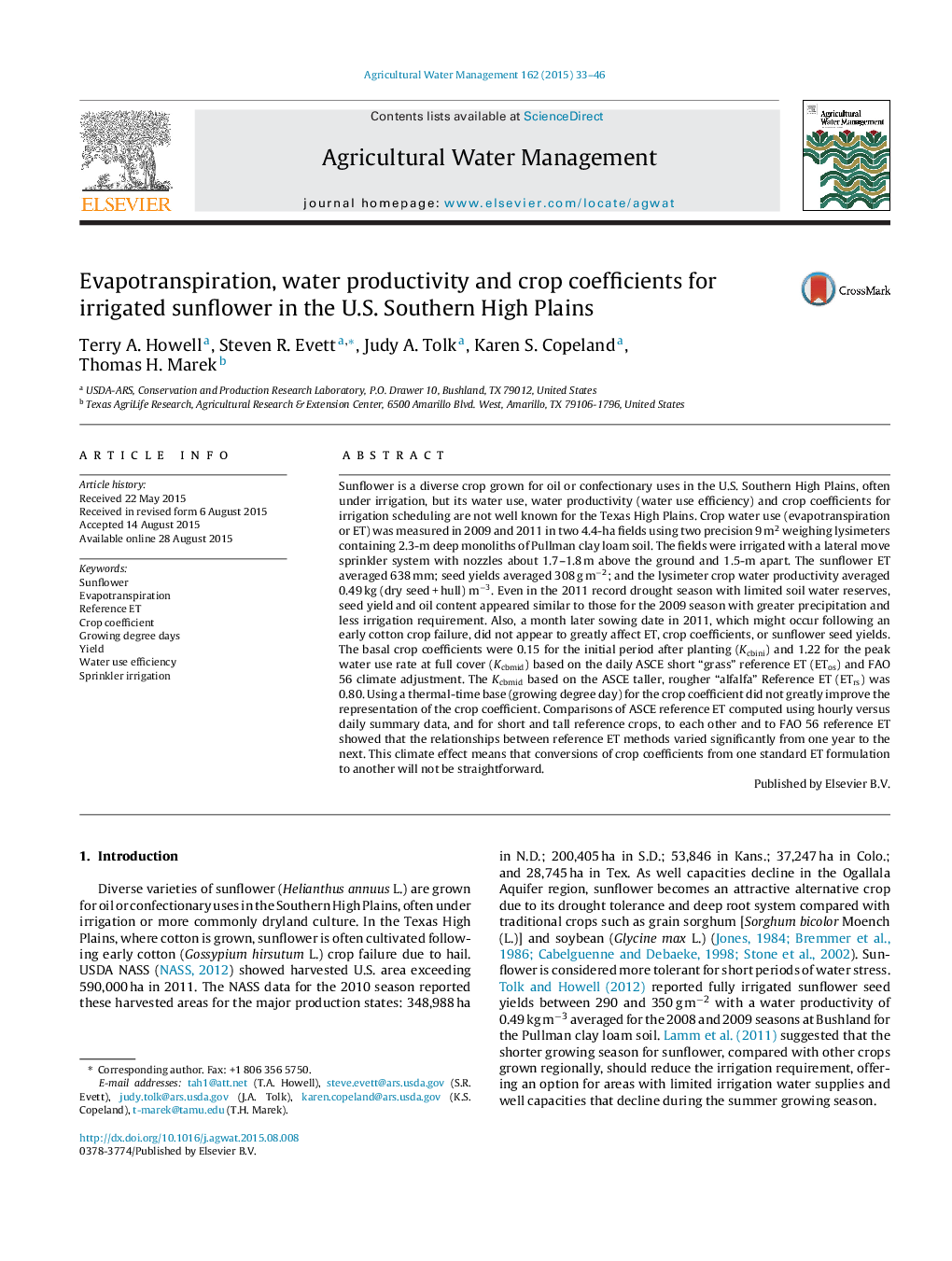| کد مقاله | کد نشریه | سال انتشار | مقاله انگلیسی | نسخه تمام متن |
|---|---|---|---|---|
| 4478393 | 1622917 | 2015 | 14 صفحه PDF | دانلود رایگان |
• Sprinkler irrigated sunflower yield and water productivity are reported.
• Sunflower was grown in a semiarid climate including a record drought.
• Yield and water productivity were stable across drought and more normal conditions.
• FAO56 adjusted crop coefficients (Kc) matched the data; with different crop calendar.
• Comparison of reference ET formulations showed little chance of Kc conversion.
Sunflower is a diverse crop grown for oil or confectionary uses in the U.S. Southern High Plains, often under irrigation, but its water use, water productivity (water use efficiency) and crop coefficients for irrigation scheduling are not well known for the Texas High Plains. Crop water use (evapotranspiration or ET) was measured in 2009 and 2011 in two 4.4-ha fields using two precision 9 m2 weighing lysimeters containing 2.3-m deep monoliths of Pullman clay loam soil. The fields were irrigated with a lateral move sprinkler system with nozzles about 1.7–1.8 m above the ground and 1.5-m apart. The sunflower ET averaged 638 mm; seed yields averaged 308 g m−2; and the lysimeter crop water productivity averaged 0.49 kg (dry seed + hull) m−3. Even in the 2011 record drought season with limited soil water reserves, seed yield and oil content appeared similar to those for the 2009 season with greater precipitation and less irrigation requirement. Also, a month later sowing date in 2011, which might occur following an early cotton crop failure, did not appear to greatly affect ET, crop coefficients, or sunflower seed yields. The basal crop coefficients were 0.15 for the initial period after planting (Kcbini) and 1.22 for the peak water use rate at full cover (Kcbmid) based on the daily ASCE short “grass” reference ET (ETos) and FAO 56 climate adjustment. The Kcbmid based on the ASCE taller, rougher “alfalfa” Reference ET (ETrs) was 0.80. Using a thermal-time base (growing degree day) for the crop coefficient did not greatly improve the representation of the crop coefficient. Comparisons of ASCE reference ET computed using hourly versus daily summary data, and for short and tall reference crops, to each other and to FAO 56 reference ET showed that the relationships between reference ET methods varied significantly from one year to the next. This climate effect means that conversions of crop coefficients from one standard ET formulation to another will not be straightforward.
Journal: Agricultural Water Management - Volume 162, December 2015, Pages 33–46
